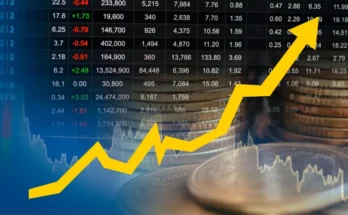When Bitcoin was first introduced, it was described as “digital gold,” a kind of store of value similar to that of gold. The comparison has been growing since, and many investors and institutional investors view cryptocurrencies as an alternative means of holding the traditional assets or varieties of stocks, bonds, and commodities. The emergence of Bitcoin and digital currencies has led to a new “digital gold rush,” characterized by market sentiment and technological innovation as two critical factors leading to fluctuating crypto prices.
But how do those forces really come together in practice, putting a face to the price fluctuations that have made the crypto market infamous for volatility? Let’s take a journey into how the forces of sentiment and technological innovation become first-order drivers in cryptocurrency prices and why such an understanding is essential to navigating this digital asset landscape.
Market Sentiment: The Emotional Driver of Crypto Prices
At its most simple, any cryptocurrency’s price will always be controlled by supply and demand; however, the former can be much more so in crypto than with traditional markets, at least partly based on emotional and psychological factors. Market sentiment is where that fits in. Cryptocurrencies, especially Bitcoin, have moved into the realm of speculative assets, and the value is often just a manifestation of what investors feel about the market rather than the intrinsic worth of the asset itself.
As soon as the optimism blows away with the wind, institutional adoption news or positive social media trends appear, demand and prices go up. Conversely, if fears of governmental regulation of cryptocurrencies, fear of hacks or other security issues, or fear of a general economic slowdown become contagious, panic selling cuts the price of cryptocurrencies into pieces.
For example, while prices for Bitcoin rose dramatically during the crypto boom of 2021, this was at least partly due to increasing institutional interest, a wave of retail adoption, and the idea that crypto could serve as a hedge against inflation. In the same time frame, major companies such as Tesla invested heavily in Bitcoin, and financial institutions such as PayPal and Square added crypto services. Such ideas set the tone for what became a positive narrative that pushed the price of Bitcoin up close to $60,000 in April 2021.
However, talk of the crack-down of China on the regulatory regime of crypto mining and trading, and the uncertain outcomes in the DeFi and NFT markets led to waves of negative sentiments and prices plummeted at such speed that market sentiment can change fast.
Innovation: The Technological Forces Driving Crypto Growth
If sentiment is known to push prices short-term, it is innovation in technology that sends the trajectory of cryptocurrencies and their prices over a long span of time. That is so since the beginning of Bitcoin in 2009 to date, blockchain technology has been and continues advancing, allowing for multiple alternative currencies to arise by offering features and applications that will necessitate and reshape industries.
Such as Ethereum, which dramatically changed the crypto space with smart contracts, allowing for decentralized applications and, consequently, DeFi and NFT. Those came along with new use cases for cryptocurrencies besides mere P2P transactions, therefore demanding more ETH. As the development of upgrades in the form of Ethereum 2.0 aims to increase scalability and lower its energy consumption, the anticipation did increase Ethereum’s price.
Other blockchain projects, among them Cardano, Polkadot, and Solana, have innovated in different features such as faster transaction speed, reduced fees, and even more secure consensus mechanisms. As these start-ups begin to gain traction with more developers and users getting on board, the attached tokens tend to rise in value because of a positive expectation of further value from these improvements over the longer run.
Furthermore, the growth in Decentralized Finance, or DeFi, and NFTs has also weighed heavily on crypto prices. The explosion in demand for cryptocurrencies like Ethereum and Chainlink, which power the increasing number of decentralized applications, has correlated with the rise of DeFi protocols that work to duplicate the services of traditional lending, borrowing, and trading without the intermediaries. Like NFTs, popularity has pushed up prices of platforms and tokens that facilitate NFT generation and trading, such as Flow and Tezos.
The Digital Gold Rush: FOMO and the Fear of Missing Out
The term “gold rush” very aptly captures the speculative nature of the cryptocurrency market. In the mid-1800s, prospectors flocked to California for a “big strike.” Similarly, in modern times, people rush into the crypto space hoping to tap into the next best opportunity that will bring them wealth. It creates a fear of missing out, because the fear of others getting rich drives even more people into the market, and that in turn fuels price increases.
FOMO feeds on itself in periods of growth, such as when more and more people decide that the value of Bitcoin or Ethereum is worth seeing go up and therefore want to get in on the action, which drives the prices ever upward. But this new institutional interest only fuels the flames, while publicly traded companies like MicroStrategy and Tesla sit up and openly buy large amounts of Bitcoin-making crypto into a “thing” that attracts attention from yet more investors.
However, the same optimism can easily turn into the opposite. While a price spurt can invite more buying, a sharp correction can bring on mass panic selling. It is this cyclical nature of market sentiment – optimism, fear, optimism, and fear – that creates the volatility seen in crypto markets.
Balancing Feeling and Innovation: The Way Forward
The constant interplay between sentiment and innovation will be the key for understanding future crypto prices, as market sentiment tends to drive short-term price swings, but long-term value is created from continuous technological evolution in blockchain and cryptocurrency ecosystems. Price increases will continue to be driven by the growth of DeFi, the promise of scalability through Ethereum 2.0, and the absorption of blockchain into many sectors through broader adoption.
However, the bright side is that nothing is ever perfect, and the future never lacks a risk. Main challenges will remain regulatory concerns on one side, security vulnerabilities on the other, and market manipulation. Market sentiment and technological innovation, therefore, in the case of crypto, would both probably play a crucial role in determining the course of price fluctuations.
Conclusion: Riding the Digital Gold Rush
The crypto market undoubtedly represents a digital gold rush, which is driven by sentiment-induced FOMO, innovation after innovation, and the perpetual excitement that investors are exhibited with. Of course, while in the short term, market sentiment is going to continue playing a role, price movements will gradually come more from technologies, as well as the wider adoption of blockchain technology, which will be at the core of driving value for the long term. That is how these forces work, that the investor can ride the rollercoaster of cryptocurrency prices and position themselves so that they might gain from what this revolutionary market has to offer.



